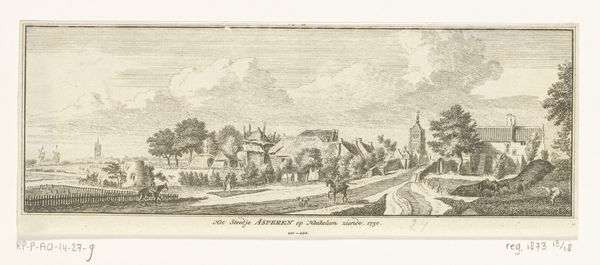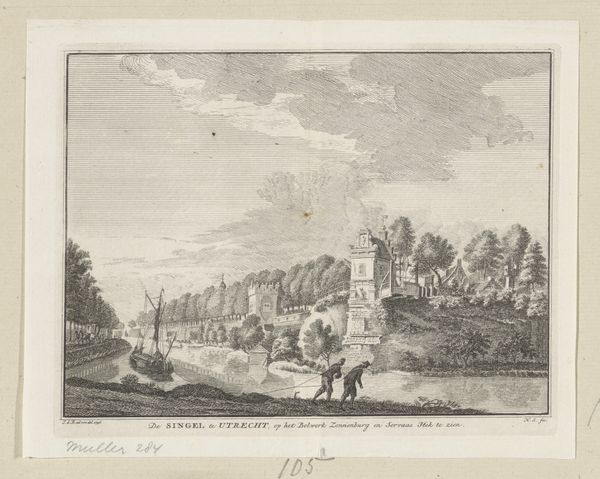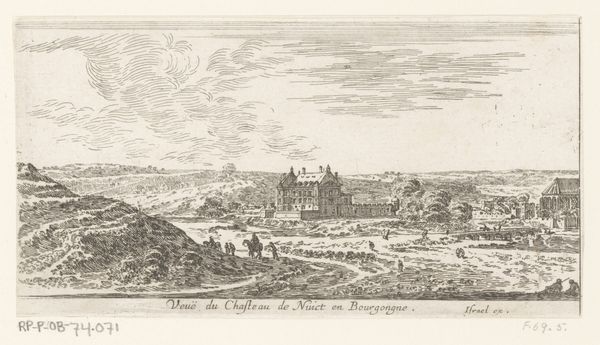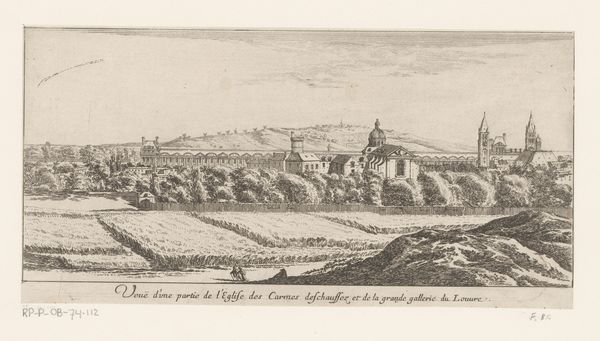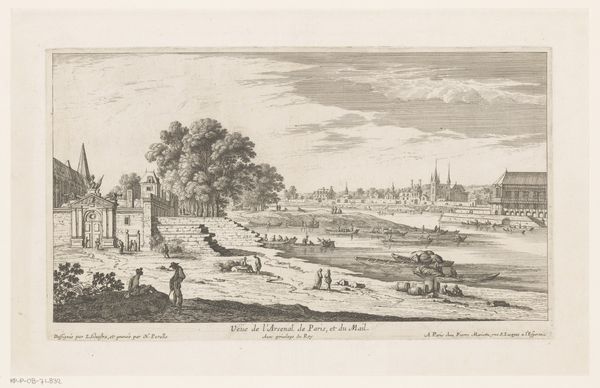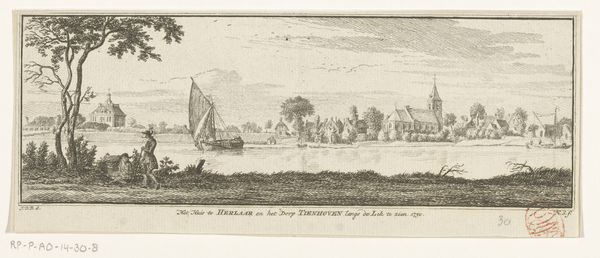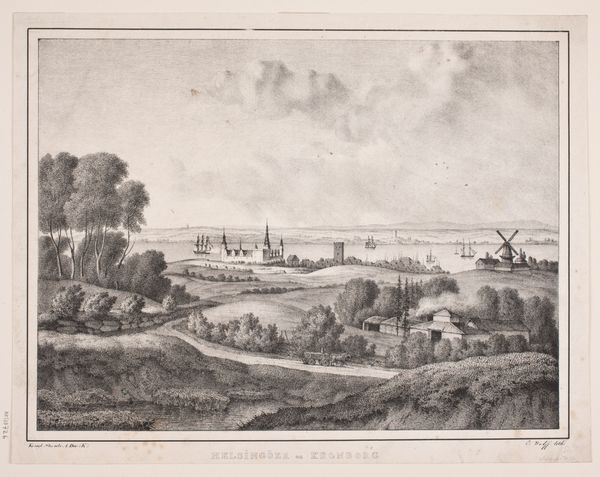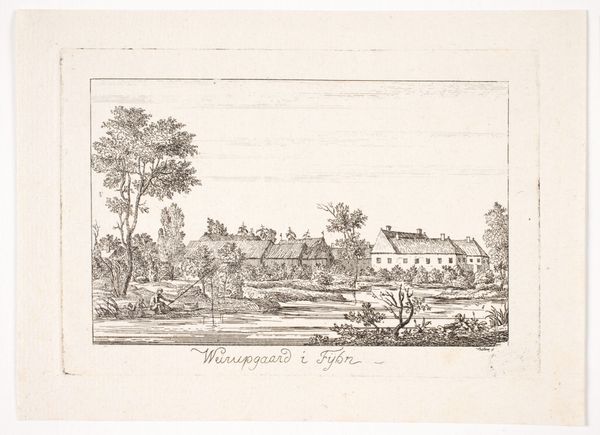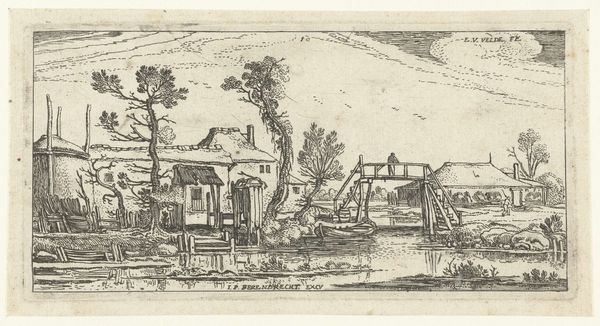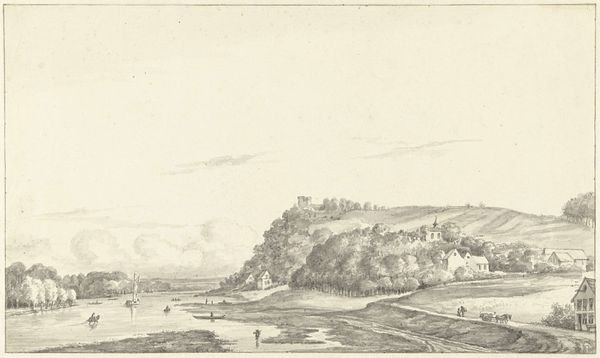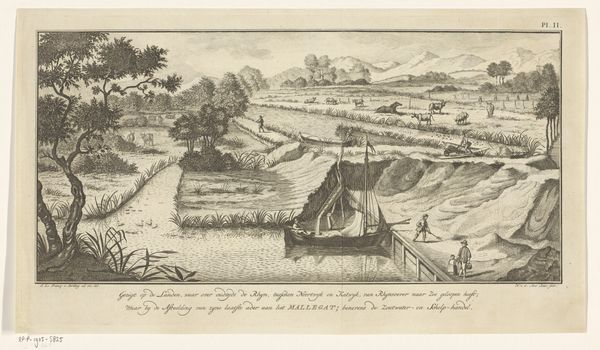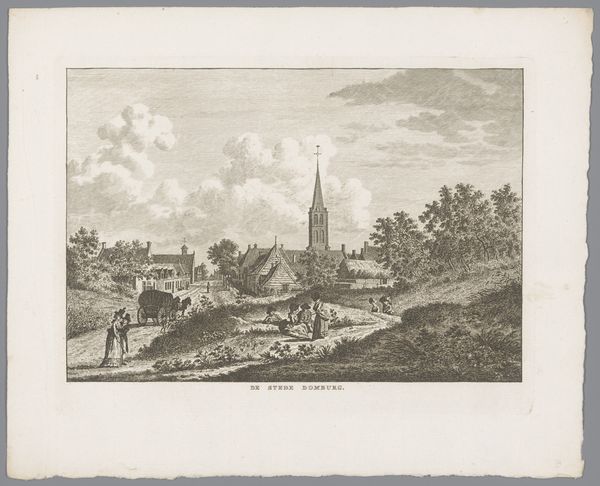
print, engraving
#
baroque
#
dutch-golden-age
# print
#
pencil sketch
#
landscape
#
geometric
#
line
#
cityscape
#
engraving
Dimensions: height 85 mm, width 205 mm
Copyright: Rijks Museum: Open Domain
Editor: This is Hendrik Spilman’s "Gezicht op Oosterbeek," an engraving from 1745. It’s a fairly simple landscape, but it has such a wonderfully tranquil feel to it. The textures feel almost photographic. What stands out to you in this work? Curator: The textures evoke a strong sense of place, you're right. Consider the way the steeple reaches, how it silently anchors the community's hopes and aspirations, a literal and symbolic high point. But the symbols aren’t always overt, are they? What about the seemingly insignificant details, like the figures crossing the small bridge? Editor: I hadn't considered the figures crossing the bridge. It looks like everyday life. Curator: Exactly. That act of crossing can also represent transitions, negotiations between different aspects of life – the worldly and spiritual, the individual and collective. This is where cultural memory resides. Think about how waterways have served as trade routes and boundaries. Do you see the suggestion of broader connection between nature and civilization that exists in this piece? Editor: I see what you mean. The bridge creates this implicit narrative of passage, and now that I see it, it's everywhere in the image. I love the details of daily life framed within nature’s architecture. It also reminds me of ideas of pilgrimage that can be a return or departure, literally and figuratively. Curator: And how that resonates across centuries. Spilman captured not just a view of Oosterbeek, but also an echo of shared human experience. Do you think viewers from then recognized this continuity too? Editor: Probably! That gives me a totally new perspective on appreciating landscape art. Thanks! Curator: My pleasure. It's in connecting these visual dots that we truly appreciate a work of art’s profound cultural memory.
Comments
No comments
Be the first to comment and join the conversation on the ultimate creative platform.
